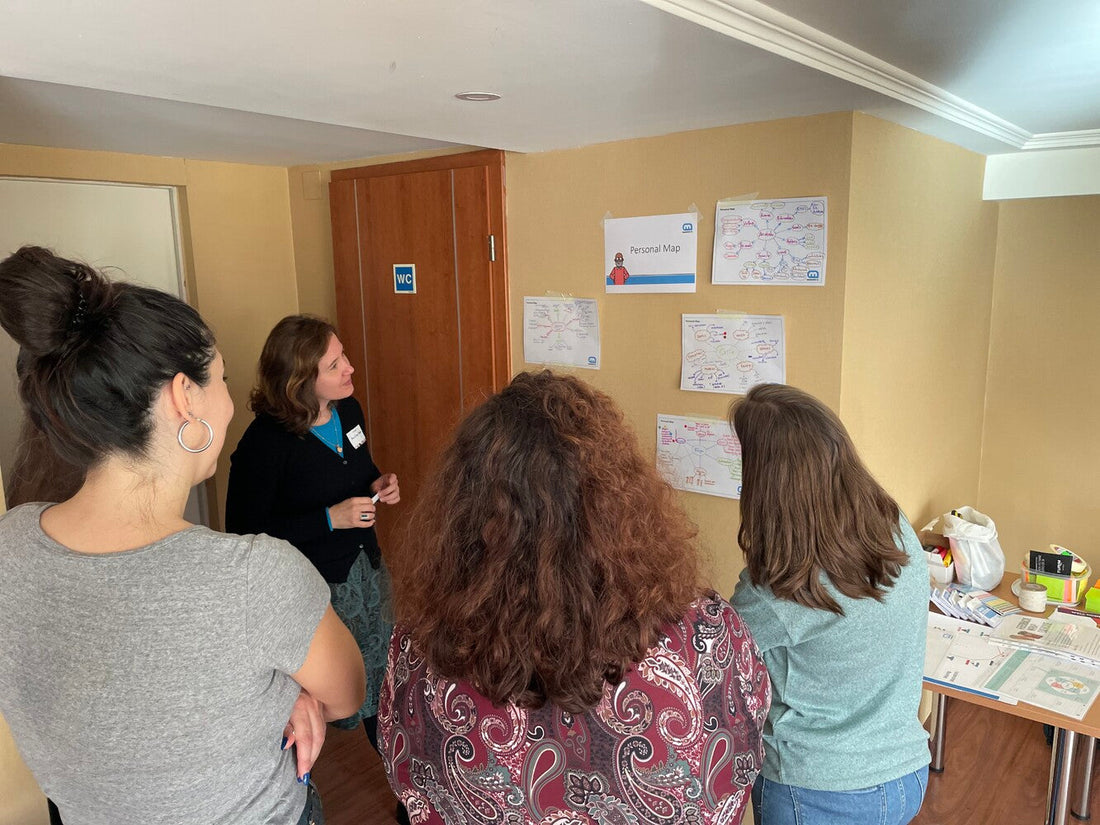
Management 3.0 - Personal Maps
Share
Management 3.0 - Personal Maps
Strong teams are built on trust and understanding. Yet, many teams only scratch the surface when it comes to truly knowing each other. Management 3.0 Personal Maps is a simple yet powerful tool that helps teams build deeper connections by exploring the personal and professional dimensions of each member. This tool encourages meaningful conversations, fostering empathy and collaboration.
Beyond individuals, Personal Maps can also be used to create a team map, aligning on shared values, rules, and goals. Here’s how Personal Maps work, why they’re effective, and my experiences using them to strengthen team bonds.
Why Use Management 3.0 Personal Maps?
1. Build Trust and Empathy:
- By learning about each other’s lives, team members gain a deeper appreciation for each other’s challenges and motivations.
2. Foster Collaboration:
- Understanding a colleague’s skills, interests, and goals makes it easier to align efforts and work together effectively.
3. Improve Communication:
- Personal Maps encourage open dialogue, breaking down barriers between team members.
4. Support New Team Members:
- They are a great icebreaker for onboarding, helping new hires feel welcome and included.
5. Align Teams:
- When used for the entire team, Personal Maps help identify shared values, goals, and ways of working together.
How to Use Management 3.0 Personal Maps (some personal twists…)
Step-by-Step Process:
1. Introduce the Activity:
- Explain the purpose of Personal Maps: to build stronger connections by exploring personal and professional aspects of each team member.
2. Create the Maps:
For Individuals:
- Option 1: Each person creates their own map, starting with their name in the center and branching out into categories like hobbies, family, work, and goals.
- Option 2: Collaborative Creation (My Favorite Twist):
- A teammate creates a map for another person based on what they know.
- The team collectively adds missing details.
- Finally, the individual reviews the map, correcting or adding facts.
For Teams:
- The team collaboratively creates a single map with categories like team values, rules, goals, and strengths.
3. Connect the Maps:
- Place the maps on a wall and use ropes or strings to visually connect similar elements (e.g., shared hobbies, overlapping skills). This physical connection fosters a sense of unity and highlights commonalities.

4. Discuss and Reflect:
- Encourage open discussion as team members present their maps. Highlight shared interests or unexpected connections.
5. Follow Up:
- Use the insights from the maps to improve collaboration, delegate tasks based on strengths, or plan team activities that align with shared interests.
My Experience Using Personal Maps

1. Onboarding New Team Members:
- When onboarding new hires, I used Personal Maps in a collaborative twist:
- The new hire created their own map to share with the team.
- The team created a map for a randomly assigned teammate, adding what they knew about that person.
- A team member then presented the map for their assigned teammate, and the team collectively added missing information.
- Finally, the individual corrected or expanded their map.
Result: This process fostered immediate connections, helped the new hire feel included, and strengthened the team’s bond.
2. Connecting Team Members:
- In one session, I placed all Personal Maps on a wall and used strings to connect shared hobbies, values, or goals.
Result: The visual connections sparked meaningful conversations and made team members feel more aligned.
3. Creating a Team Map:
- For an established team, I facilitated the creation of a team-level map, focusing on shared values, goals, and operating principles.
Result: This exercise helped the team clarify their priorities, define rules for collaboration, and align on a shared vision.
4. Leadership Coaching:
- In coaching sessions, I encouraged leaders to create their own Personal Maps to reflect on their values and aspirations. Sharing these maps with their teams helped leaders appear more approachable and fostered trust.
Result: Leaders developed stronger connections with their teams and inspired open dialogue.
Why Personal Maps Work
1. Encourage Vulnerability:
- Sharing personal details in a safe environment builds trust and strengthens team cohesion.
2. Reveal Hidden Talents and Interests:
- The exercise often uncovers skills or passions that can be leveraged to improve teamwork and outcomes.
3. Bridge Cultural or Geographical Gaps:
- Personal Maps help teams working across cultures or locations find common ground.
4. Promote Alignment:
- Team-level maps ensure everyone is aligned on shared values, goals, and rules.
5. Enhance Onboarding:
- The process helps new hires integrate quickly, reducing the time it takes to build strong relationships.
Takeaway
Personal Maps are a versatile tool for building trust, fostering collaboration, and aligning teams. Whether you’re onboarding new members, strengthening an existing team, or creating a shared team map, this exercise brings people closer together in meaningful ways.
Have you tried using Personal Maps with your team? If not, now is the time to explore
their potential for transforming team dynamics!
Recommended reading
Producer: Ricardo Fernandes
Linkedin
